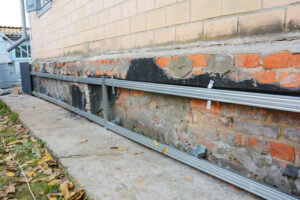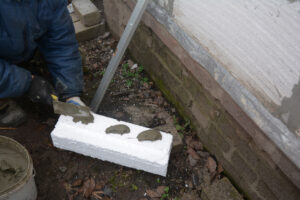Is it better to waterproof a basement from inside or outside?

If you’ve got a basement, you probably understand the importance of waterproofing it. Waterproofing a basement protects not only your basement and whatever belongings you’re keeping in it but also the structural integrity of your home. You might be confused, though, about the right way to waterproof a basement. Is it better to waterproof from the inside or the outside? There are pros and cons to each method.
- Exterior Waterproofing: When your basement is waterproofed from the outside, moisture is prevented from seeping in through the walls. The dirt around the basement is removed and a water-resistant membrane, known as a moisture barrier, is installed. A footer drainpipe is then laid to carry water out to an exterior French drain.
- Pros: This is a great option if you use your basement for storage and prefer to have work done on the outside instead of the inside to avoid disrupting your things. It’s an extremely effective method of waterproofing, efficient and durable.
- Cons: Exterior waterproofing is labor-intensive, messy, and expensive. It involves excavating around the entire perimeter of your home to expose the basement walls, and it doesn’t prevent water from seeping up through the floor. What’s more, exterior waterproofing requires maintenance and upkeep to keep drains from becoming clogged.
- Interior Waterproofing: To waterproof from the inside, a combination of techniques is used. A sump pump system is installed to collect water and carry it away from the house, to a place outside where it won’t cause damage. Additionally, cracks in the foundation are often injected with polyurethane to prevent water from coming through, and a sealant is applied to the walls and floors. In some cases, a vapor barrier is used, particularly when the space is only a partial basement and also involves a crawl space.
- Pros: Waterproofing from the inside doesn’t require digging up the yard. It’s a quicker and easier process, less expensive, and easier to maintain.
- Cons: Furniture and other belongings will need to be removed for interior waterproofing, as will any cabinets that are built into the walls. Sump pumps do require maintenance to keep them running smoothly, and they require battery backup to keep them from falling when they’re most needed. In some cases, interior waterproofing is less effective than exterior waterproofing.

You may not know whether you want interior waterproofing, exterior waterproofing, or some combination of both, but you can trust Reliable Basement Services to help you decide on the right waterproofing solution and make the entire process hassle-free. A family-owned and operated company, we’ve served the greater Chicago area for over a decade. We offer a full spectrum of basement services including crack repairs, sump pump systems, basement waterproofing, basement windows, and floor repair. Our consistently high standards have made us an award-winning Chicago basement waterproofing contractor, so call us at (630) 777-0539 or visit our website.
